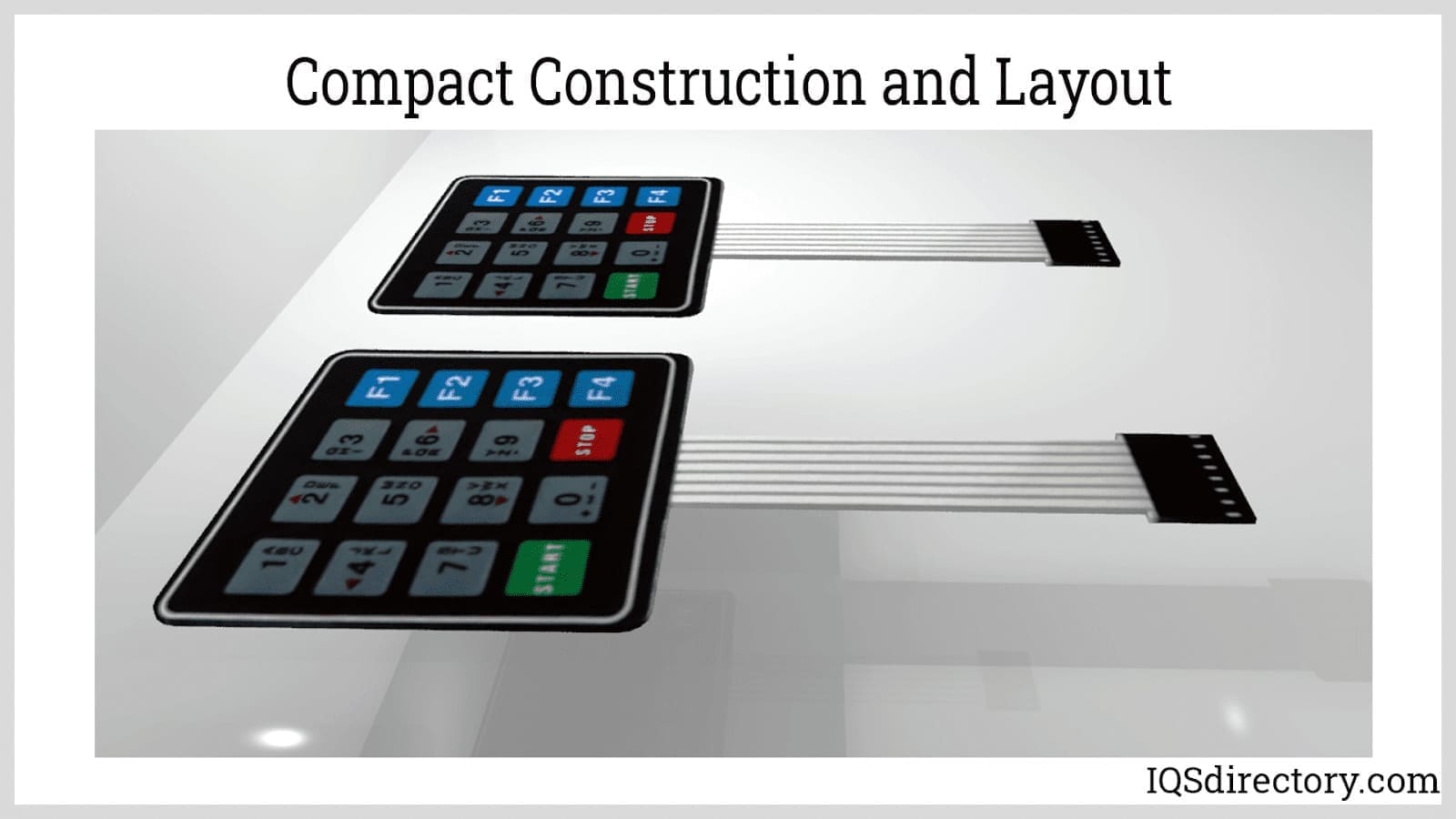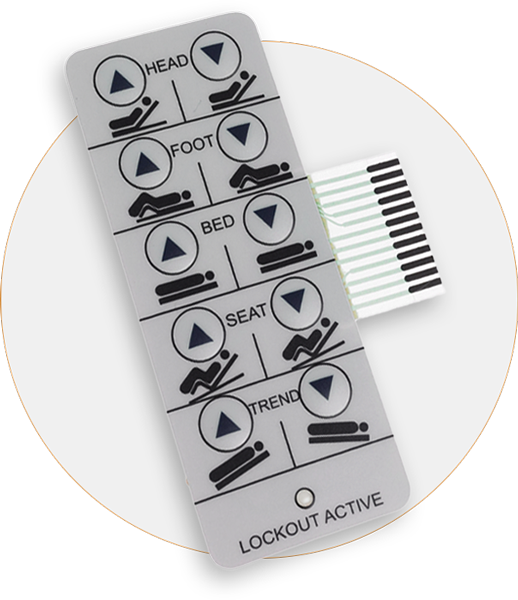The Benefits of Using Membrane Switches in Modern Electronics
The Benefits of Using Membrane Switches in Modern Electronics
Blog Article
Recognizing the Significance of Membrane Switches in User User Interfaces
Membrane buttons are essential parts in the design of efficient individual interfaces, assisting in not just capability but additionally boosting visual allure and customer interaction. Their unique functions, such as resistance to ecological variables and adjustable layouts, make them appropriate for a diverse array of applications across multiple industries. As we check out the future patterns and various benefits connected with Membrane innovation, it comes to be clear that these buttons are greater than simply components; they stand for a convergence of advancement and functionality. The implications of this innovation on individual experience are worth examining additionally.
What Are Membrane Buttons?

The spacer layer, which has sticky properties, permits the splitting up of the circuit layer from the overlay, making sure that the button remains in a non-activated state till pushed. When pressure is put on the overlay, it presses the spacer layer, linking the space and finishing the circuit in the underlying layer. This layout not just reduces the physical area needed for standard mechanical buttons however also improves the toughness of the device, as Membrane buttons are normally immune to dirt, moisture, and various other environmental aspects.
Typically discovered in applications ranging from consumer electronic devices to medical tools, Membrane buttons are indispensable to modern-day innovation, supplying a effective and user-friendly interface that lines up with modern layout requirements.
Advantages of Membrane Switches
While numerous button innovations exist, Membrane Switches deal distinctive advantages that make them particularly preferable in various applications. Among the key benefits of Membrane switches is their small design, which enables space-saving implementations in devices where realty is limited. Their thin profile not just boosts visual appeal yet also facilitates lightweight construction.
One more considerable benefit is their resistance to ecological aspects. Membrane buttons are generally sealed versus wetness, dirt, and contaminants, making them optimal for usage sought after settings, such as clinical gadgets and commercial equipment. This sturdiness prolongs the life expectancy of the button, decreasing maintenance costs and boosting reliability.
Moreover, Membrane switches can be customized to satisfy particular style demands, incorporating unique graphics and colors that enhance individual communication. Their responsive responses choices can likewise be customized to offer a satisfying customer experience. In addition, Membrane buttons are economical, particularly in high-volume applications, as they can be created efficiently.
Applications in Numerous Industries

In the customer electronics sector, Membrane switches are common in gadgets such as microwaves, cleaning equipments, and remotes. Their responsive responses and visual choices improve user experience while offering a sleek, modern look. In addition, automotive producers utilize Membrane switches in control panel controls and infotainment systems, where area is restricted, and user interaction is essential.
In addition, the industrial sector leverages Membrane buttons in control panels for machinery and devices, allowing for instinctive operation in usually extreme settings. Their resistance to chemicals and dampness guarantees longevity and integrity in these applications. In general, the adaptability of Membrane Switches adds considerably to their widespread use, making them vital in numerous technical domain names.
Layout Factors To Consider for Membrane Switches

When designing Membrane buttons, numerous key considerations must be thought about to make certain optimal capability and user experience. The option of products is vital; selecting resilient, high-quality substratums can boost the switch's long life and resistance to ecological elements such as moisture and temperature level fluctuations.
Second of all, the design of the graphic overlay ought to prioritize quality and ease of usage. Symbols and message need to be legible, and the layout needs to assist in intuitive communication (membrane switches). Additionally, tactile responses is necessary; integrating a responsive dome or other mechanisms can enhance the customer experience by giving physical verification of activation
One more vital variable is the button's electric efficiency. Designers have to make certain that the conductive traces are appropriately developed to decrease resistance and stay clear of signal interference. This entails examining the needed actuation force and making certain compatibility with the digital parts they will certainly user interface with.

Future Trends in Membrane Innovation
As modern technology remains to development, Membrane buttons are positioned to advance substantially, driven by advancements in materials and making strategies. One arising pattern is the unification of innovative materials, such as versatile substratums and conductive inks, which enhance durability and you could check here reduce the total weight of Membrane switches. These products not just improve the responsive response but additionally permit the layout of switches that can withstand harsher environmental conditions.
Additionally, the assimilation of touch-sensitive technologies is changing traditional Membrane Switches into even more interactive interface. Capacitive touch sensors installed within Membrane switch panels can offer a more intuitive and receptive customer experience, lining up with the growing demand for streamlined, contemporary designs in customer electronic devices.
In addition, developments in printing techniques, such as electronic and 3D printing, enable fast prototyping and personalization of Membrane buttons. This adaptability enables producers to react much more quickly to market demands and customer choices.
Last but not least, sustainability is becoming a substantial focus, with producers exploring environment-friendly products and processes. As these patterns unravel, the future of Membrane innovation assures boosted performance, visual allure, and ecological duty, strengthening their duty in sophisticated interface throughout numerous markets.
Verdict
Finally, Membrane Switches represent an essential part in the design of interface, combining performance with aesthetic versatility. Their advantages, consisting of durability and resistance to environmental elements, make them appropriate for diverse applications across various sectors. Thoughtful style factors to consider improve individual interaction and experience. As developments in technology proceed, the advancement of Membrane switches is anticipated to additional fine-tune interface, driving advancement and boosting usability in an increasingly intricate technical landscape.
Membrane buttons are integral elements in the design of efficient individual interfaces, promoting not only functionality but likewise enhancing aesthetic charm and individual communication.Membrane Switches serve as an important element in different customer interfaces, assisting in a seamless interaction between users and digital tools.While various button innovations exist, Membrane Switches deal unique advantages that make them specifically desirable in various applications.Moreover, Membrane buttons can be resource tailored to meet particular design requirements, integrating special graphics and colors that improve user interaction.In conclusion, Membrane Switches represent an essential element in the design of user interfaces, incorporating performance with visual adaptability.
Report this page